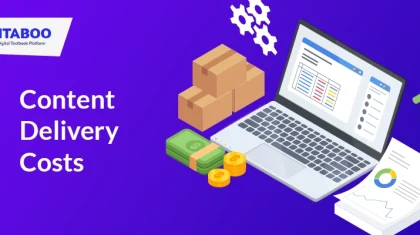
Top 8 Advantages of an Interactive STEM Curriculum
Summarize this blog with your favorite AI:
What is STEM?
The acronym STEM stands for Science, Technology, Engineering, and Mathematics. More recently, arts were added to this educational model, as educators believed that art and creativity play an important role in the understanding of the former subjects in the STEM Curriculum, thus changing the acronym from STEM to STEAM. Although they can be used interchangeably.
Why is STEM Training Important?
The purpose of focusing on these specific streams in K-12 education is to prepare students for the future by deepening their understanding of fundamental concepts. Our world revolves around science, technology, engineering, and mathematics. In this age, it wouldn’t be wrong to say that we are overly dependent on STEM on a daily basis.
Right from healthcare, transportation to food production, everything has an underlying STEM philosophy. And that is precisely why it is important to create more awareness of STEM. And introducing STEM curriculum in the K-12 years is the right way to go about it, as young minds are impressionable and full of curiosity.
Related: Top 7 Innovations in K-12 Education
According to the World Economic Forum, China had at least 4.7 million recent STEM grads as of 2016; India had 2.6 million as of 2017; the U.S. pulls in at third at 568,000. Having an undergraduate degree in a STEM field has its benefits while applying for universities. But if we look at the survey results of the Pew Research Center, students in the U.S. don’t pursue STEM courses because they find the subjects too difficult.
According to the surveyed candidates who are now not working in STEM fields, they did not pursue a STEM career due to a lack of access to resources and opportunities. But now with mobile phones, tablets, and laptops being a part of school education, it is much easier to deliver STEM courses on these devices, making the courses more interactive, accessible and engaging.
By providing them with enough knowledge and guiding them in the right direction, we will have more students opting for these branches of studies in future and developing many new innovative tools for the benefit of life around us.
Related: 8 Trends in Education Technology That Will Have A Major Impact | 2019
Top advantages of an interactive STEM curriculum:
1. Allows Students to Keep Up with Technology
As you already know, it is becoming increasingly difficult to keep up with new updates. There’s always something new coming up in various sectors that we are unaware of. Take your smartphone, for example, every month there’s a new update. The effects of these updates might be insignificant to our ignorant eyes, but it makes a significant difference in the performance of the smartphone.
Ten years ago, we didn’t have the technology that we have now, and the same will happen in the next ten years. So, an interactive STEM curriculum will keep the students in sync with technology through constant updates. Teachers can help them subscribe to relevant sites which in turn will help the students gain more knowledge on their subject.
Rather than presenting them with new concepts all at once after their schooling years, giving them basic knowledge year after year will help them better understand and cope with future advances.
An interactive digital STEM curriculum will help them understand the concepts of science, engineering, and math in an engaging manner. Combine this with guidance from teachers in the classroom, students will be able to comprehend various complex topics and concepts in a much better way.
Related: How to Improve Student Learning Outcomes with Digital Learning
2. Provides an Opportunity to Experiment on a Virtual Platform
School is a place where students are allowed to learn, experiment and make mistakes. While it is alright to learn from one’s mistakes, sometimes the mistakes are too costly to bear. So, teachers found a solution where they let the students learn about the technicalities of the topic and practice on an online virtual platform.
You can create exercises where students are allowed to perform experiments on their device screens. For example, they can view the resulting solution after mixing four different chemicals together. While this may or may not prove disastrous in an actual lab, it is better to experiment once virtually.
This helps them understand what works and what doesn’t, before performing live experiments. They can conduct such virtual experiments multiple times without any real risk. So, by creating an online interactive STEM curriculum, you can help the students prepare for the class in advance through video tutorials, and practice on a virtual platform before performing an actual experiment.
3. Improves Critical Thinking Skills
An interactive STEM curriculum comprises of learning modules which test a student’s critical thinking skills. This could be done with the help of a role-playing simulated scenario. Simulation-based scenarios can be created where students have to perform certain tasks and make decisions and then view the results in real-time.
By creating game-based learning modules, publishers and educators can enable students to find solutions and solve problems. It is estimated that most of the jobs in the future will require math and science skills, therefore, developing these skills from a young age will certainly benefit students as they can hone them over the years and perhaps master it by the time they are ready for a job.
Related: 9 Benefits of Interactive eBooks
4. Helps Students to Learn and Innovate with Augmented Reality
Augmented reality was once a novel never-seen-before concept, but now it has become too common, with educational institutes incorporating AR technologies in K-12 education. AR makes virtual learning possible in a completely risk-free environment. In many schools, AR technology is being used right from the elementary level to make learning more interesting and to explain basic concepts in an engaging and immersive manner.
It can play an important role in explaining complex concepts in engineering and science. Engineering students can see and learn the functioning of a machine or robotics. They can then try and work around the augmented screen, make changes and test possibilities and then take the experiment to the real-world through an actual demo.
Related: Augmented Reality Technology – The Future of Education
5. Encourages Teamwork
Interaction fosters engagement. Students work better in teams and groups rather than in silos, as this gives them an opportunity to discuss and share their ideas and thoughts with their peers. A collaborative project is always more fun to do and learn. Designing an interactive STEM curriculum with social sharing features embedded within them will allow students to share their ideas on the learning portal even when they are not in the classroom.
This facilitates communication and collaboration. By encouraging students to share ideas and partake in brainstorming activities where each student might present a different outlook on the concept, teachers can help them build their team-working abilities and communication skills.
Related: Are Digital Textbooks More Effective for K-12 Curriculum
6. Bridges the Talent Gap
The job industry requirements have always been different from what is being churned out year after year by universities. When students face the real world, they realize that they hardly know anything that’s useful out there. Introducing STEM courses in K-12 curriculum ensures that students start preparing themselves for the job market from a very young age. And by the time they get to universities, they would have identified their aptitude and have a clear goal and objective about their career in mind.
Technology is what drives innovation in every field. So, getting a hands-on experience in using technology and manipulating it to create something innovative or trying out new ideas during their formative years in school will surely help them get a better understanding of the possibilities of the future and can start working towards achieving it. As there’s already a wide gap between the number of STEM jobs available and the number of qualified people for the job, educators can prepare today’s students to become future inventors.
7. Challenges Students and Empowers Them to Learn from Their Mistakes
Making mistakes is a part of learning process. An online interactive STEM curriculum, with its frequent assessments and quizzes, compels students to understand concepts rather than learning by rote. Every mistake they make in an assessment helps them learn better. A virtual experiment gone wrong can be done all over again until they get it right. It teaches them to learn from their failures, making them more tolerant as adults.
A STEM course challenges students to broaden their minds and be accepting to different possibilities. Students can be taught to persevere and attain a solution. Putting them in an authentic problem-solving situation will inspire them to draw creative solutions, and all these skills and applications stay with them for life.
Viewing engineering and scientific marvels can help a great deal in encouraging them to pursue a STEM course, just like kids who watch superhero cartoons want to be a superhero when they grow up. With smartphones and tablets always at hand, parents and teachers can inspire them to watch the various discoveries made by mankind, which in turn can inspire them to pursue STEM with a renewed interest.
8. Variety of Fields to Explore Interests
Not every student who studies STEM in school ends up becoming an engineer, a medical professional or a scientist. There are a lot of other industries where these students can apply their STEM knowledge.
For example, they could develop smart clothes for the fashion industry, work on special effects in Hollywood, work for the protection of wildlife and environment, etc. Starting with the STEM courses at the elementary level will help educators and parents to observe and figure out the students’ area of interest and guide them in the right direction.
This helps students to gain a deeper knowledge of new concepts and technologies and think about new possibilities for the future. With constant access to a mobile-based device, students can always look up for new and upcoming innovations and figure out solutions for current and future problems.
Conclusion:
STEM career is a prospering field of opportunities. Exposing students to STEM at a young age will give them a chance to explore, discover and learn new things. The K-12 students of today could be future inventors if we help them get curious enough and let them pursue their natural interests. Giving them an early access to STEM curriculum will help them develop their practical skills and get a deeper understanding of our dynamic modern world.
The current lack of rightfully skilled individuals for STEM jobs will definitely create a higher market for STEM related jobs in the coming future. So, developing a strategic plan and designing an interactive STEM curriculum for K-12 will enable students to upskill themselves and get access to higher paying jobs in future.
Related: 10 Point Checklist for Publishing Higher Education Textbooks
Discover how a mobile-first training platform can help your organization.
KITABOO is a cloud-based platform to create, deliver & track mobile-first interactive training content.


